A WARRIOR'S TALE
LAND OF PLENTY
JIKOHNSASEH LISTENS
DELIVERING YAGOWANEH
THE GREAT PEACE WOMAN
MOTHER OF NATIONS

The Peacemaker next in his travels arrived at a village. The village was on wooded slopes not far from great bodies of water. Here he noticed the lack of stockades and the people seemed happy and without fear. He also saw these people were cultivators. They had vast orchards and gardens, raising and developing many kinds of food. The abundance of the people was self-evident everywhere he looked. Also absent were the high wooden enclosures that fortified the villages he was familiar with. He wondered at what he saw and he was curious how they maintained such crops in the middle of so much turmoil even more so since the path of war passed through their midst.
These Huron Neutrals were keepers of the land, and because of their prominence in this area, they lived relatively in Peace, making treaties with many nations in order to maintain their desired peaceful ways. Their tranquility was acquired through careful negotiations so that they generally were free of fear and war.
However this Village was on the path of war—north and south, east and west. It was here the warriors would pass through on their way to war. It was the custom of the time that the Corn Clan mothers would prepare food and a place of lodging for these warriors. In doing so, there was an agreement giving safe passage to the warriors of treaty nations, but also protecting the village and its agricultural land from the rages of war. The warrior’s lodge was on the outskirts of the Neutral Village Tonawanda near the falls known as Niagara. And here they were welcomed and provided for.
The Peacemaker upon arriving in the Neutral village was directed to the Warrior’s camp. Upon entering, he instantly recognized the woman attending to the needs of the visitors. He knew her from a time when she was known as The Lynx, and He as Sapling. He exclaimed, “Jikohnsaseh” which was to mean “New Face of Purity”. The People needed them, so they came again to help their people.
This woman was the last direct descendant of Sky-Woman. As such she was honored and respected by many Nations, though her lineage fell among the Kakaws or Atiwandaronk. She was considered Yegowaneh, the Great Woman, by all Onkwehoweh and was recognized as the descendant of the first woman who came to earth, and as the first Yegowaneh, the woman who was the mother of all Onkwehoweh. As such she was sacred to her people. Because of her hereditary obligations and special orenda signified by a caul at birth, she lived (down-fended) with the Elders from the time she was small. Here, she learned the traditions and the customs of the people, but she also was raised in the diplomacy of Peace. She was recognized as a woman of great vision and wisdom. It became that no decision of major importance was made without her ratification. Her word was law.
As a leader among her people, Jikohnsaseh’s home was always open to the people. She would keep food on the hearth, and extra furs for bedding for the visitors. A great many people came to counsel with her. Because of her wisdom, she acted much like a judge to as many as fourteen nations. She was already widely respected as a woman of peace. But it was here also that the young hot blooded warriors would come for food and rest.
As a young woman, Jikohnsaseh would listen to the stories of courage, valor, and conquest from the young warriors completely enthralled by them. Her peaceful village was so full of non-events, that she began to look forward to the visits of returning warriors, to listen to the exciting tales of battles and deeds. The warriors would stop by anytime. Here they knew they would eat and have a place to rest and a chance to retell the events of their journey to the captivating young woman. Her excitement for the heroic tales had become consuming for her.
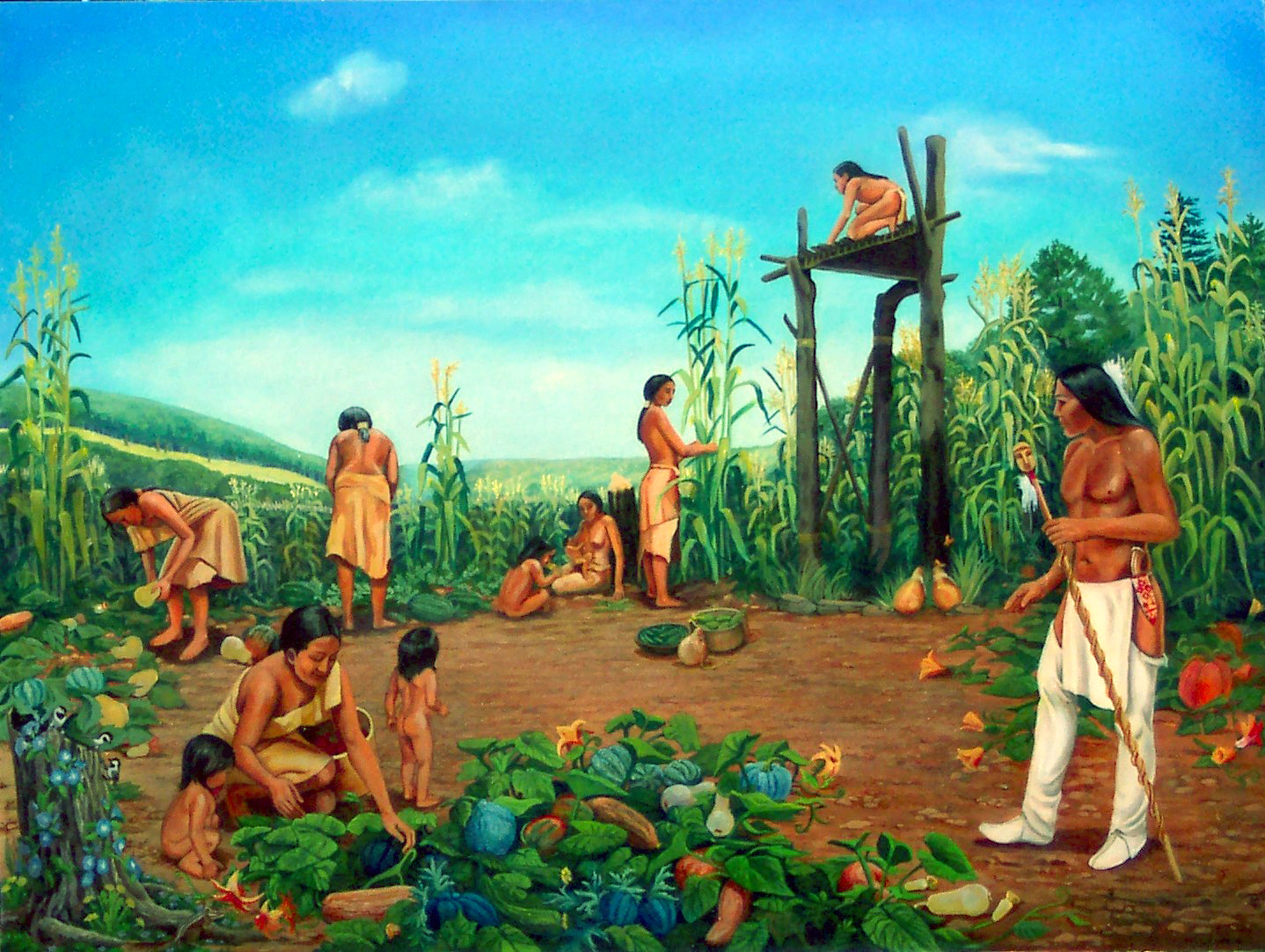
After traveling again some distance the Peacemaker landed his stone canoe and began to walk on a path in the woods toward a village in the distant hills. Here the forest was thick and wild life plentiful. After some time, he came to an opening in the forest vegetation. He contemplated the stories he had been told by the hunting party he had met. He was saddened that mankind was suffering so much. He thought of the little children without much food to eat. He thought of the starving elders who could not get out to hunt. And he thought that this was not the way the Creator had meant for things to be. His mission was to bring Peace to these warring factions but he wondered how that would be possible as long as they fought over hunting grounds struggling to feed their people.
The stomping of Flint’s feet had caused much cold weather. What animals had remained behind long ago had been hunted out. When he had met the Mohawk hunters, he had looked for the little animals. He had seen none. He looked for the birds. He had seen none. And he had not seen any suitable for hunting. No wonder he thought that the hunters in their desperation to feed their families had resorted to hunting each other. He thought of the fear that pervaded the villages, afraid to leave and hunt, afraid to forage, afraid to leave without a large group to protect each other.
Sadness over whelmed him, that mankind had traveled so far from the Original Instructions the Creator had given to them. It was the plan of the Creator that mankind would enjoy the beautiful Earth Mother and to be fed from her bounty. It was the plan of the Creator that mankind would have peace, and harmony here upon this place where the Mother of all Ongwehowe rested. It was the plan of the Creator that mankind should help one another, and to work together making sure all had enough to eat, and wear, and a place to reside. The earth had been created with all manner of good things to eat, fish in the waters, birds in the air, and game in the forest. Now Flint’s temper tantrum had made it very hard for mankind as many of the animals were nowhere to be found.
Coming out of his deep thoughts, the Peacemaker was first aware of the song of birds. Now aware of his surroundings, he looked over a clearing. Here on the opposite side of the glen was the village. It had no stockades. Between the village and the Peacemaker were acres and acres of orchards and fields. Surprised, the Peacemaker stepped up his gait.
As he did so, he passed through fields of corn, and orchards. Here the deer looked up from their grazing then went back to their lunch undisturbed. Overhead, the trees were filled with birds of every imaginable colors. Some serenaded him as he walked. Everywhere he was now aware of life everywhere, butterflies flit over the flowers, fuzzy caterpillars inched their way along a branch, and in the running brook, he could see the fish of enormous size lolling in the shadows of a fallen tree.
He readily saw there was no hunger here. He wondered at what he saw and was curious how they maintained such crops in the middle of so much turmoil and chaos. As he walked through the fields, he could see the women working, and a high platform with a small child on top. Beside him was a very old man. A roof made of thatch caused shade to protect the old man from the beating of the warm sun.
The child looked his way then whispered to the old man. He attempted to show the old man what he was talking about as he glanced toward where the Peacemaker walked. The old man responded and an exchange ensued. Soon the child jumped off the platform and disappeared. No alarm was sounded, and the Peacemaker continued his journey.
He arrived outside the Neutral village of the Huron. The village was on wooded slopes not far from great bodies of water. Here he noticed the lack of stockades and the People seemed happy and without fear. He made his fire outside the village and waited for an invitation to enter and speak to the people.
It appeared these Huron Neutrals were keepers of the land, these People were Cultivators. They had vast orchards and gardens, raising and developing many kinds of food. And game was readily abundant for they too would eat from the Cultivators immense productivity. He contemplated once again all that the hunting party had told him but now he added to it the lush fields he had just encountered and wondered how it might be that the Mohawks starved and these People had more than enough. The contrast was certainly puzzling and he was anxious to learn of it. Thus he sat on the path awaiting for the village to acknowledge him.
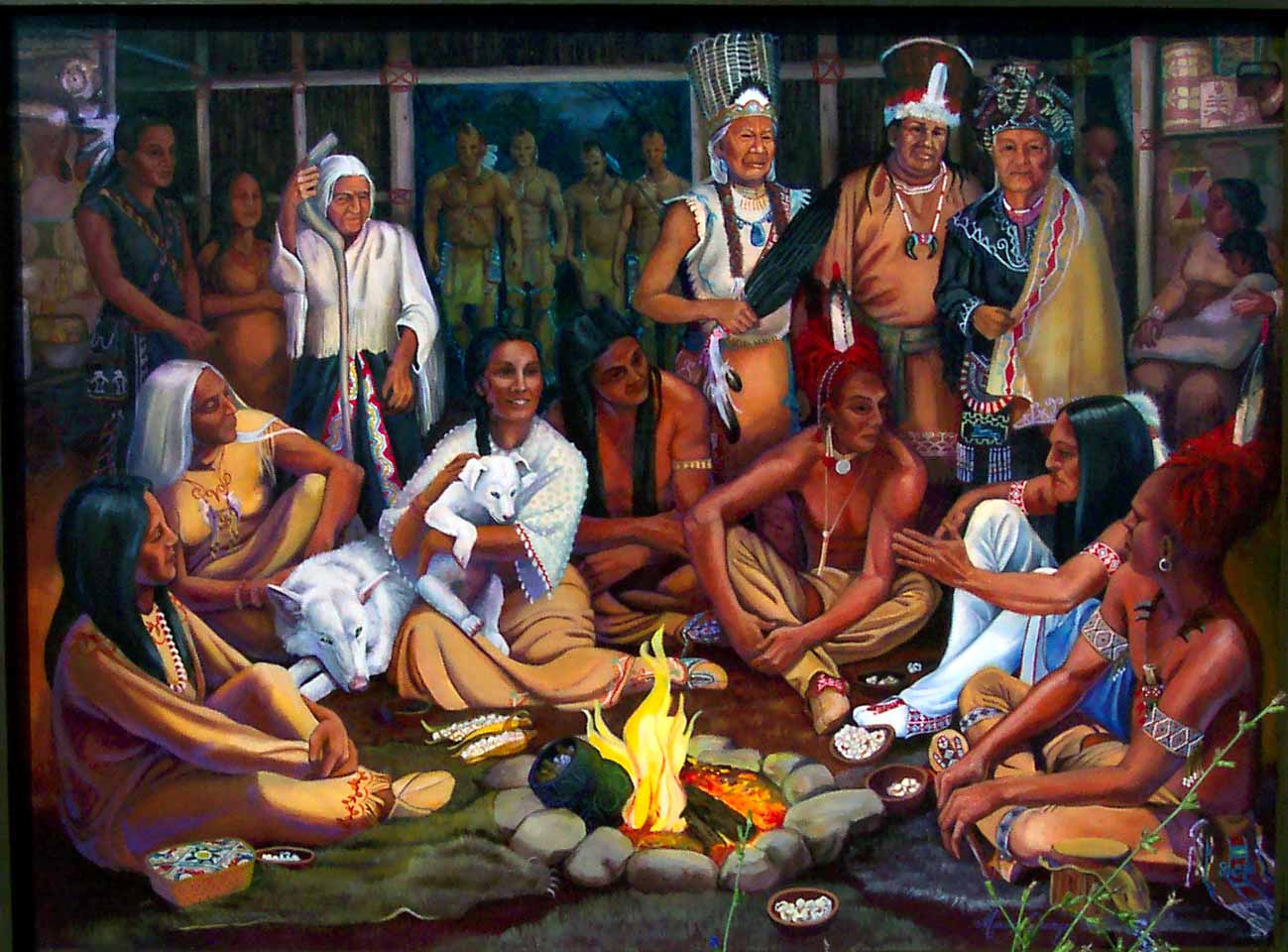
And so it was that the Peacemaker found the woman Jikohnsaseh. He had sought out this renowned woman of power, for if he could convince her of his plan, he would gain credibility among the people and have a most valuable ally.
He entered the Lodge and she offered him water for water is life. Without water, good clean pure water, there is no life. Then she placed food before him that he might eat and freed from the pangs of hunger. She watched his mannerisms, and his attitude. Quickly she took note that he was not like the other young men in the mannerisms and attitude. And after he had eaten, she asked him his purpose for he was not dressed like the warriors and it was apparent that he had another purpose for his travels.
He began to lay out his vision of peace. He said, “I carry the Mind of the Master of Life. And the word I bring is that all men shall live together in Peace and love one another. This word has four parts; Peace, Power, Righteousness and Love. Peace so that people need not live in fear. Power is the ability to reason and not argue or throw ashes on one another. Righteousness is justice between men and nations and the desire to justice prevail. And the fourth is Love, for without Love, there can never be Peace.”
Jikohnsaseh listened intently then she asked, “Your message is good, but a word is nothing until it is given form and set to work in the world. What form shall the message take when it comes to dwell among men?”
“It will take the form of the longhouse in which there are many fires, one for each family, yet all live as one household under one chief mother,” replied the Peacemaker. “Hereabouts are many nations, each with its own council fire, yet shall they live together as one household in peace. They shall be the Haudenosaunee, People of the Longhouse. They shall have one mind and live under one law. Thinking shall replace killing, and there shall be one common wealth.”
The Peacemaker’s ideas would change the course of the events of her life and the small village, and also for people generations yet unborn. His ideas would change the course of history.
Jikohnsaseh was a wise woman but the Peacemaker pointed out her fascination with the stories encouraged the warriors to be fierce. She saw this was wrong. In this way she encouraged the wars. She realized if Peace could be brought to all the land, prosperity would ensue, and the fear of the people would give way to happiness. His was a way to heal the hearts of the people and to bring about a sense of safety. As the young visitor continued laying out his ideas, Jikohnsaseh was filled with a desire to help with his cause. She agreed, “That is a good message. I take hold of it. I embrace it” and Jikohnsaseh became the very first person to join what would become known as the Laws of Great Peace, to take hold of the Good Message for the Good Mind.
Now the Peacemaker instructed that the women shall possess the titles of chieftainship. They shall name the chiefs. “That is because you, my Mother, were the first to accept the Good News of Peace and Power so you shall be called Jikohnsaseh, New Face, for your countenance evinces the New Mind, and you will be known as the Mother of Nations.”
Jikohnsaseh was a valuable ally. She immediately set about teaching the Good Message to all that came her way, especially the young warriors. Bands of warriors passed through and delivered many treaty gifts to her. She would feed the War Captains, but now she exhorted them to follow the Path of Peace, to lay down their weapons of destruction and war since all men are brothers. She instructed her Corn Clan mothers to do likewise so that all men will walk upon the Earth without fear of war and would know only Peace.
The warrior’s camp has become the visitor’s camp and is present yet today. If you visit the ceremonies of the Seneca-Cayuga, you will find food if you are hungry at the visitor’s camp. Here the pot is always on the fire. And if you desire to spend the night, they will find you lodging. Here you are always welcomed. You may even participate in the ceremonies and dance all night. The camp of Jikohnsaseh lives on through the clan mothers.
The Peacemaker spent much time with the Corn Maiden. He learned all the corn ways of peace. The ideas he had about Peace came from the Creator but he saw much in the diplomacy of the Cultivators. They had been able in the midst of war torn times, to preserve their way of life, their fields, and orchards. This intrigued him. He would visit with the men whose work it was to keep watch over the fields and protect them from humans and animals. Here the Peacemaker would ask many questions about the cultivation and harvesting of corn. “Now I understand what this work is,” the Peacemaker would reply to their explanations.
Then the Peacemaker would begin his own elucidation of Peace. These conversations served to banter around ideas based on the understandings derived from the study of the ways of Jikohnsaseh’s People. The Peacemaker found here new ideas to add to his own thoughts. He found a purpose in the cultivation of the gifts of the Creator and the Mother Earth. Here in the village of Tonawanda, new instruction arrived for the formulation of the Longhouse People. It came as the Peacemaker learned and understood the process of these Neutrals.
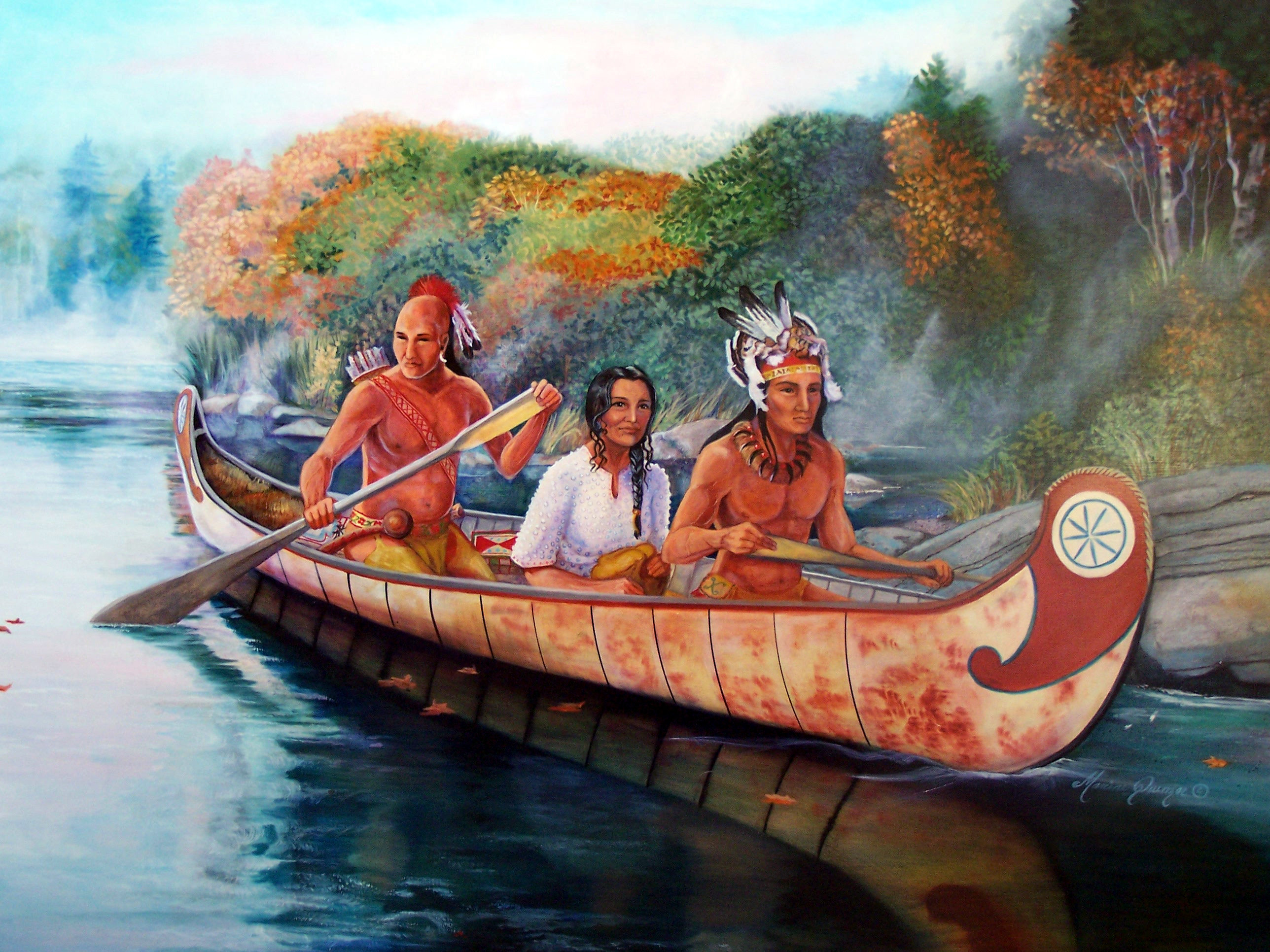
The Peacemaker and Hayenwentha consulted with Jikohnsaseh on every important detail. Without her approval of their plan, the integrity of the principle of the confederacy of the five nations would have been in jeopardy. Jikohnsaseh’s significance to the cause was considerable. The Peacemaker would refuse to begin any council until she had arrived. Often times, she was late, having to take action to avoid war parties. There were tense moments while her delegates and the Peacemaker awaited the arrival of the Great Peace Woman. Often a lookout would be posted to keep watch of the waterway, to see her canoe approaching. There was great relief that swept through the assembled Peace delegates when at last they could see her canoe approaching around the bend of the river. The Peacemaker would then paddle the river to pick her up and place her safely at the council.
Generations had fought in the old ways. Change was difficult for the People. Jikohnsaseh, regarded as a descendant of the first woman and as mother of all the first Onkweoweh (real People), was sacred to her People. Her word was law and her sanctions were necessary in all political measures of inter-tribal importance. She was a Great Woman of Peace, a Yegowaneh among her People. She used her position as Clan Mother to teach the warriors the way of Peace; to lay down their weapons of war. The young warriors heard her words of Peace. She exhorted her Corn Clan mothers that there was a new duty to perform. They now had a responsibility to help achieve Peace. They would still provide food and shelter for the warriors but whenever opportunity availed itself, the clan mothers should also speak of Peace while taking care of their responsibilities.
Jikohnsaseh worked so hard for it and believed in it so much, that many of the People were swayed. Persuasive words kept Peace between hostile warriors who met there and laid aside their anger and their war clubs. Disputes were so adjusted that the hunters and warriors who came there with anger and war in their hearts, left her doors as brothers. Men sought wise counsels in hours of doubt and danger. People came with hate in their hearts and went away with love for each other, such was her ability and her love for the People. To the sick and wounded she ministered with the best medicinal herbs. It is said that Hayenwentha’s departed daughter came often from the sky, borne by the great white bird, to give the Jikohnsaseh advice and guidance to help the People.
Her words were carefully chosen and not taken lightly by those in attendance. Her ability to see clearly and come to decisions that provided for a win-win conclusion for all involved in difficult disputes was re-known. Her words were honored and taken to heart. Her counsel was respected and accepted by even the hardest of warrior as all sought Peace. So when she spoke, her ideas held the floor and she was able to arbitrate many discussions that would give to Haudenosaunee women rights in all respects of life.
She reminded the Peace Council of the balance of all things in Creation and that now their form for the confederacy must contain this balance also. Like the Hawk and Eagle, with different viewpoints, men and women were a part of the whole. It was imperative that they join together in all aspects of this new Peace, if it is to work.
In the times of war, it was the women who suffered the most, burying their children, husbands, brothers, and uncles leaving make children without role models, and the family without a hunter to provide clothing and meat. It was the women who continued the genetic lines of the People in the face of all hardship and so it must be that they have proper representation at councils, especially councils of war. It is the women who can determine if the war is worth the cost to the people. And so it became that the men were Officers of Peace and only the women could declare war, for the women understood the true cost of such action.
It would be in such meetings that Jikohnsaseh would inspire and narrate the value of the woman and the advantages of women in creating the balances and checks that the Great Laws would need if it were to truly serve ALL the People. Her wisdom and verbal ability would give much insight and weight to Peace. It is because of her great statesmanship that the Great Laws were crafted into the first and only true democracy to be established forever more. Under her leadership, everyone became part of the Great Peace. Everyone was given a voice.
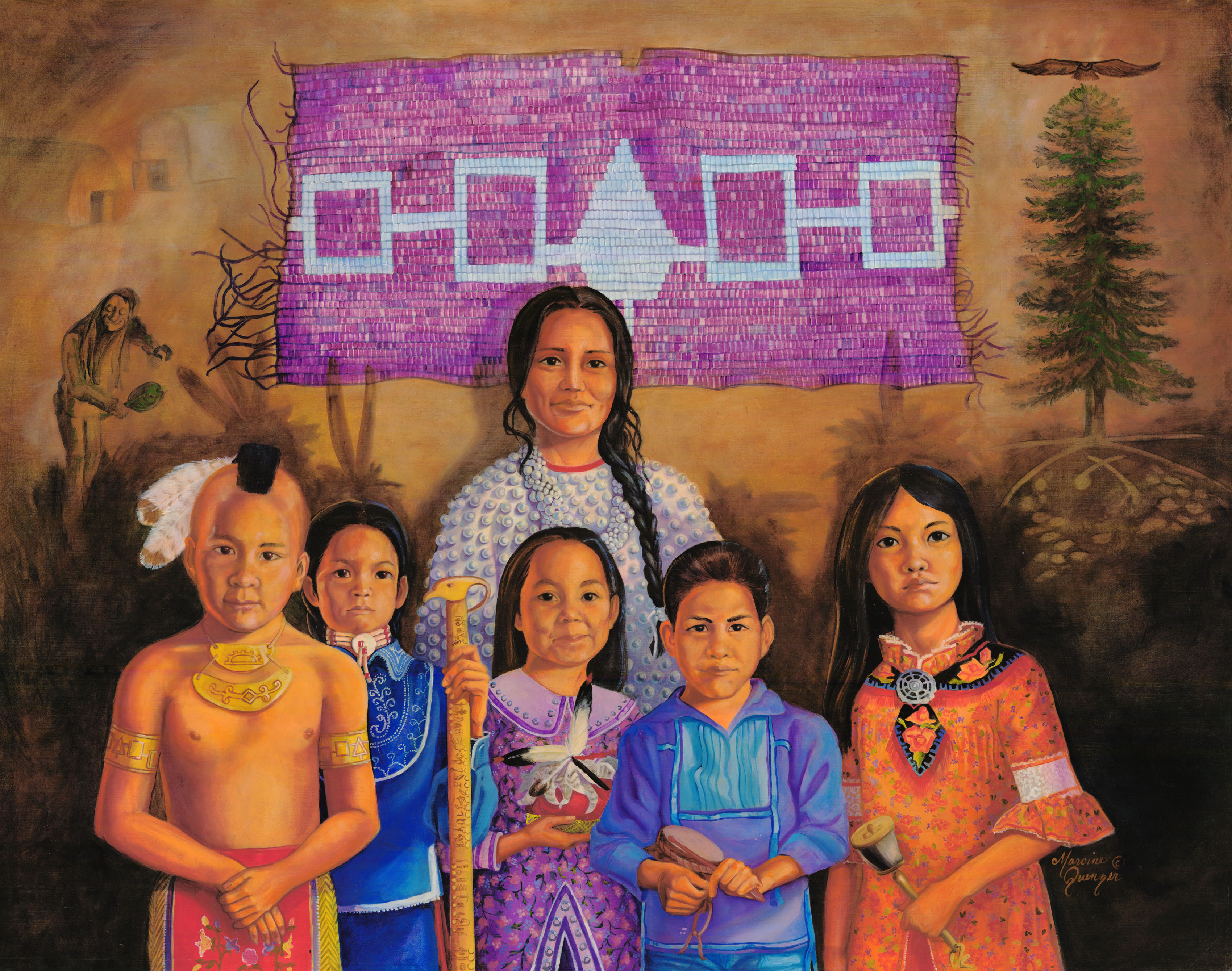
The Great Peace Woman traveled from her home among the Neutrals to these foreign lands and people to bring to them the ways of Peace. She traveled with the Peacemaker, and Hayenwentha, and the Councils of Peace. And long after the Peace Confederacy was established, she held council with all Nations of the Confederacy, continuing her dedication to solving the disputes of the People and teaching the way of Peace and Love among them.
Sometimes, two feuding sides would be fed on separate sides of a partition and from the same bowls. It is said that it was a custom of that time that when eating from the same bowl that all were brothers. When the partition was removed, the warriors would discover they had been eating with their bitter enemy. Because of this ritual, the enemy was now like their brother and the Peace forbid the fighting with relatives. Some wars were averted from the practice of this tradition. The Peacemaker himself used this tradition to serve beaver tail to seal the peace. No sharp instrument was allowed at such repasts.
It is said two hunters came to her both having killed the same deer and both wanting the deer. In her wisdom, she divided the deer in half, so the one hunter to take to his half to his large family and the single hunter to share his meat with the widows and orphans. Both were satisfied with this solution.
Once, the Jikohnsaseh faced a dissenting faction over hunting territory. The four legged had moved from one territory to another, and the people were at odds because of it. Bringing together her women, she led the “war party”. She marched upon the villages without weapon of any kind. The sight of women marching as warriors, brought about a quick and peaceful solution of sharing the game until it returned.
She would be the first “Jikohnsaseh” with her name becoming the office of the Great Peace Woman, Head Clan Mother of the Nation. She would wear a cape covered with the fresh water pearls, and these pearls would become a representative of Purity and Peace. This cape became a symbol of her office and position as the head of all Clan Mothers of the Confederacy. Women of re-known wisdom would follow in her footsteps at the House of Peace, eventually established at Ganondagon. Most would be of the Wolf Clan and from the Wendot and/or Seneca nations. The last to hold this honored office was Caroline Parker, whose brother Ely Parker was the last of the Grand Sachems of the Seneca. Today, as the nations are dispersed across Turtle Island, there is no one woman chosen from the people as a Great Peace Woman and her office stands empty.
A belt of shell beads was created. This belt became known as the Hiawatha Wampum belt and signified the treaty between the five nations of the Mohawk, Oneida, Onondaga, Cayuga and Seneca. A White Tree, representing the White Pine Tree of Peace would symbolize truth, purity, and the heart of the Confederacy held by the Onondaga as “Keepers of the Fire that does not die”. This Tree was in the center of the belt while the two white squares on either side represented the Mohawk and Oneida Nations of the Eastern Door and the Cayuga and Seneca Nations of the Western Door. The White Pine had great boughs to shelter all who desired Peace. Its leaves were five in a bundle, each leaf with a white stripe down the center. This represented the five nations of the five fingered ones with the Great Peace at their core. The tree had Four Great White Roots of Peace being the Four Principles of the Great law: Love, Peace, Reason, and Justice which the Peacemaker foresaw should one day extend to the Four Corners of the Earth.
These symbols gave the People a vision, a representation that acknowledged their understanding and gave root to their fundamentalism way of life. The Peacemaker was a master at symbols. He recognized their value in bringing forth an acceptance of his purpose among mankind. And in the same way he honored the Great Peace Woman for the Name Jikohnsaseh would give forth the New Face of the People, the New Countenance of the New Mind.
Many generations would past before our present day generation would ask inquiringly “What is left of the Great Laws for us?”
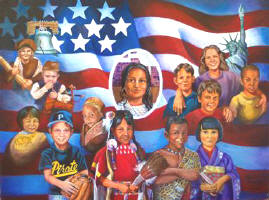
Over the years, Jikohnsaseh had arbitrated the disagreements and had taught the people to make their decisions for the benefit of all. She taught them patiently, to think with love and caring for everyone as all were brothers and children of the Maker. She taught by example in her unfaltering devotion to the people and to the cause she believed in so fervently, The Great Laws and the ways of Peace. Even the final negotiations were presided by her.
Jikohnsaseh had seen the young men grow to manhood. She had mothered many in much the same way she had mothered the Laws of The Great Peace. The Jikohnsaseh and her example had led the way into many issues regarding the history and the governmental functions of the Gantowisas or Clan Mothers of the League.
When the Great Laws were finished, the women were the proprietors of the titles of office. These offices are of a political AND spiritual purpose combined. If the men put in office were not doing right by the people and by the Great Laws, it is the women who would remove them, and find a more suitable leader. The wisdom in this decision comes from the women who bear and raise the children, and who better than these women to know the hearts and abilities of those who would become leaders and sachems of the People.
Women would also hold the veto power over war. The young men, always eager, would call for war. And men, whose nature it is to be warriors, may not always see clearly the Path of Peace. But a woman—who knows she must bury her loved ones, the children she has suckled—she will see and know if the fight is worth it’s cost in lives and death.
Women owned the property. Again, there is great wisdom in this. The woman raised the children. A need for a home and means to provide for the children was of utmost importance. Men could always fend for themselves, but for a woman with little ones to tend for, time would be limited for replacing items needed.
Again, children belong to the lineage of the woman. The clans follow the matrilineal lineage of the women. In this way, every child had a mother, whereas the father may or may not always be there to offer nurturing. The mother’s family took in the child, and the child had a place among the People from the beginning of its journey here on this Earth.
Such were the contributions of Jikohnsaseh. Her wisdom, and her unfailing devotion to the cause, made her an important part of every proceeding of the Peace. The Laws of Great Peace would serve the People well for 1000s of years.
Eventually, a new people, a white race from across the waters would come to the People. The White Race would come with their hearts burning with the desire for Freedom, a desire that would be further fueled by contact with the Haudenosaunee and the democracy they had formed. They would use the Laws of Great Peace as a format for their own form of democracy to be set down in the Constitution of the United States of America. However, the White Race had no honor for women, even of stature like Jikohnsaseh, and so the work she had done to help forge the important document for the People was omitted in the White Man’s version. It would take the new government until the 1920’s to begin to give women the rights the Haudenosaunee women had enjoyed for thousands of years and then it would be the Haudenosaunee women suffragettes who would lead the way.
According to Wendot-Seneca tradition Jikohnsaseh was the reincarnation of the Lynx, Sky Woman’s daughter as well as her direct lineal descendant. The Peacemaker recognized the Jikohnsaseh as his cosmic mother, and quite literally, the mother of all Onkwehoweh. He thus gave to Jikohnsaseh a new name. He gave to her “Mother of Nations.” this name become one also earned as she mothered the warriors and the people into Peace, while safeguarding the infancy of the League. As time went by, Turtle Island has become a refuge for the unwanted, the displaced, the hungry and those desiring a better life and freedom. It has become a melting pot of nationalities, cultures, and religions, all protected by a sacred document that was originally crafted by three individuals seeking the Creator’s will. The Jikohnsaseh has become the Mother of Nations as numerous as the stars.
